Ekaterina Kuzmina
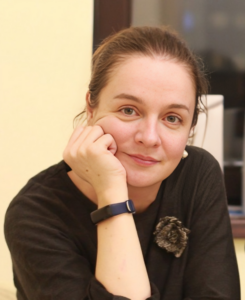 Year of birth: 1977.
Year of birth: 1977.
Where do you live: Russia, Saint Petersburg.
Describe your art in three words: Symbolism, Surrealism.
Could you share more about your background and how it has influenced your artistic journey?
My mother is an artist, and my father is a metallurgical engineer by profession. When I was a child, they had different perspectives on my life prospects. My mother taught me to draw from a very young age, and I was quite good at it. My father, on the other hand, said that an artist could not earn a living and that I needed to get a serious technical education. In high school, I became interested in psychology and even tried to apply to the psychology department, but I failed the math exam. Nevertheless, I easily got into the Academy of Cold and Food Technology, specializing in cryogenic engineering and air conditioning. Initially, I thought I would study for a year and then try again to get into the psychology department, but I got used to it, settled in, and finished my technical university. At the same time, I studied English under an experimental program during the fifth and sixth periods at the same institute. Thus, I received two diplomas simultaneously – one in engineering and one in technical translation from English in the field of low-temperature physics and technology.
After graduating, I worked in my field, but closer to 40, I had a crisis and realized that I urgently needed to change something in my life. My hand reached for the canvas and paints, and since then, I haven’t been able to stop.
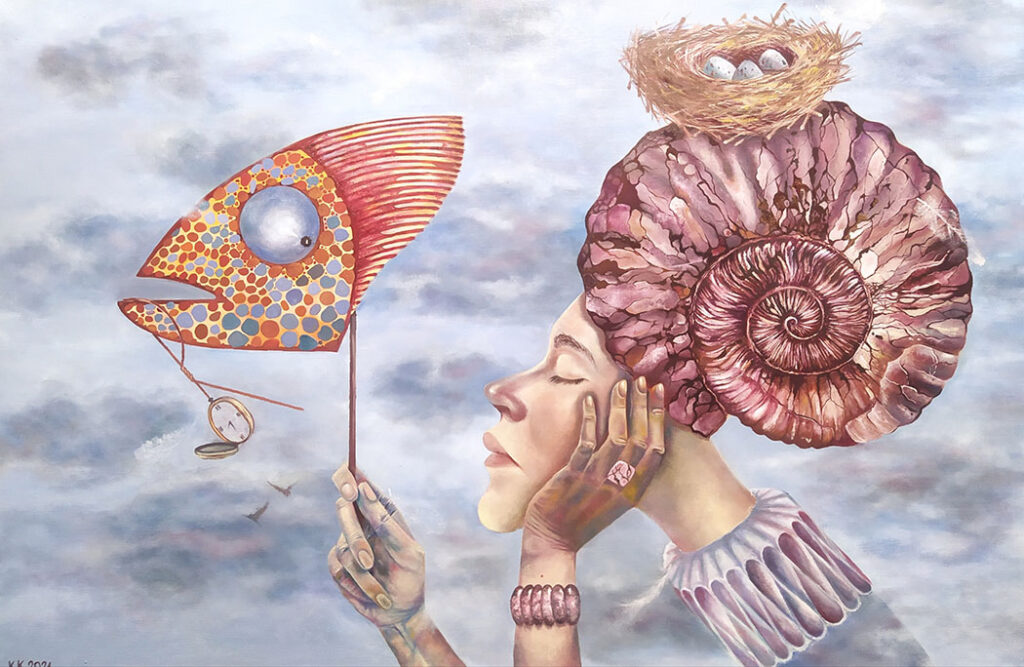 Ekaterina Kuzmina | Hypocrisy in Rhodonite
Ekaterina Kuzmina | Hypocrisy in Rhodonite
How did your education in engineering and technical English translation influence your approach to art?
I really like straight lines and geometric shapes in painting. I often use them as an additional means of expressing thoughts. This is undoubtedly an echo of my technical education.
Growing up with a professional artist as a mother, how did this shape your perception of art and your own development as an artist?
My mother is still my main critic and mentor. In my childhood, we constantly visited museums and theaters; you could say I absorbed my love for art with my mother’s milk. Since I never received formal education in painting, the knowledge and attitude she instilled in me became the basis and foundation for my feelings towards painting and all my creative activities.
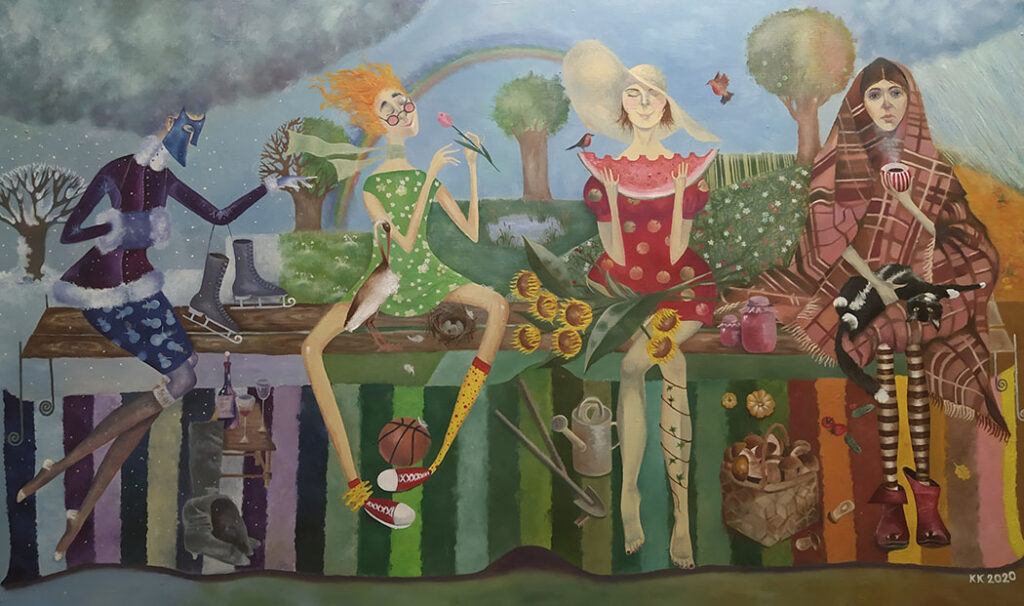 Ekaterina Kuzmina | The Seasons
Ekaterina Kuzmina | The Seasons
How do you decide on the symbolism and themes in your work?
I forgot to mention another love of mine from childhood – astronomy. My friend and I, even as preschoolers, would go to the nearest park in the evenings and observe the stars on clear nights, identifying constellations, sketching satellite movements, and waiting for UFOs. Periodically, we would catch their messages (or so we thought) on an old radio receiver, recording dots and dashes and trying to decode them using Morse code. We wanted results, of course, but the process was much more important.
Therefore, the themes of painting naturally and organically defined themselves for me: I paint what interests and concerns me. It results in an intangible, otherworldly symbiosis of space, psychology, philosophy, and esotericism, fully in the spirit of our times.
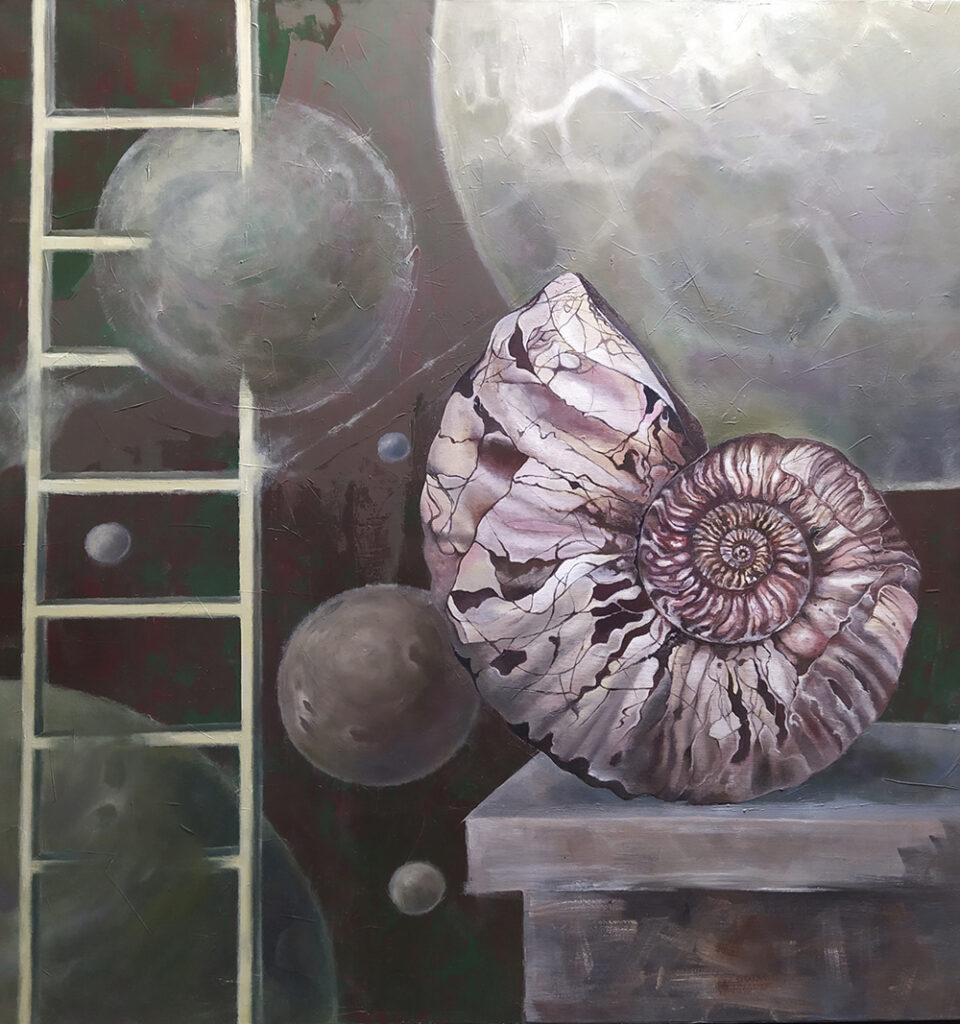 Ekaterina Kuzmina | Yellow Staircase Up
Ekaterina Kuzmina | Yellow Staircase Up
Your works often explore themes of self-identification and reflection. How do you translate these abstract concepts into visual art?
I think the most important thing is to find yourself and your place in this world. Therefore, the heroines of my works reflect, recognize themselves, feel their strengths, and look closely at their shadow. I try to show this through symbols. However, it often happens that things that are obvious to me are not at all obvious to the viewer. Probably because the world is our mirror, and we only see in it what is within us.
What has been the most memorable response or feedback you’ve received from someone viewing your work?
I have always been amazed at how different things people see in my paintings. There have been times when I disagreed or didn’t understand what the viewer meant. Sometimes, someone would look at my painting, share their thoughts, and it seemed to me that they understood it better than I did. These moments are the most valuable to me, probably because that’s when we start to resonate – the artist and the viewer.
If I were to talk about a specific moment, I vividly remember a girl at an art fair who said about my work “Geometry of Unfreedom” that the human body is both our protection and our prison. I really liked and remembered those words.
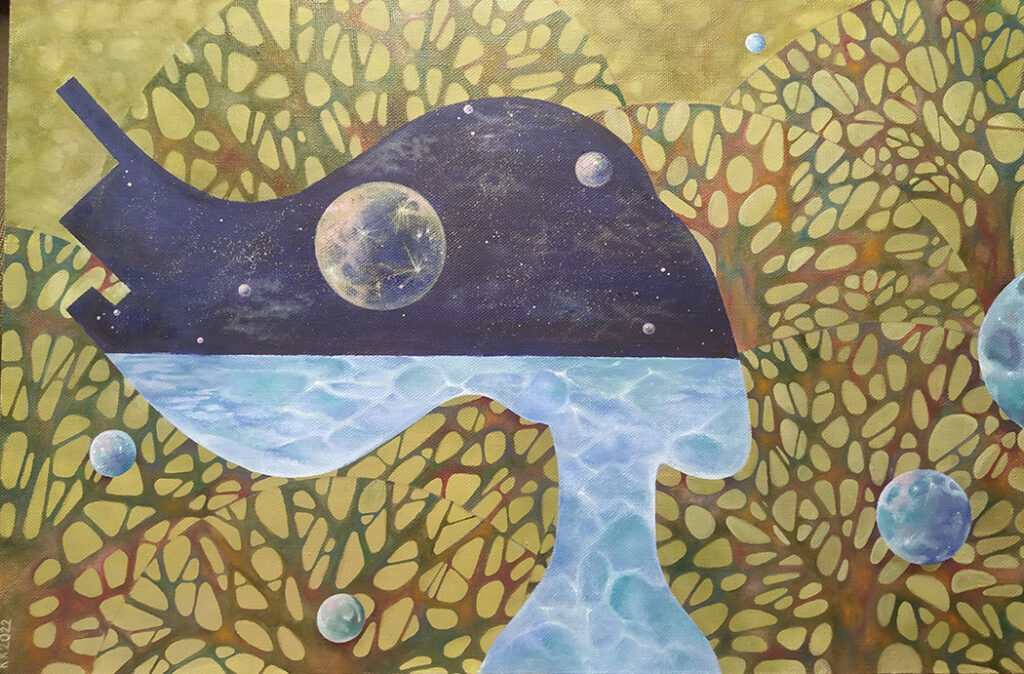 Ekaterina Kuzmina | Geometry of Unfreedom
Ekaterina Kuzmina | Geometry of Unfreedom

Leave a Reply